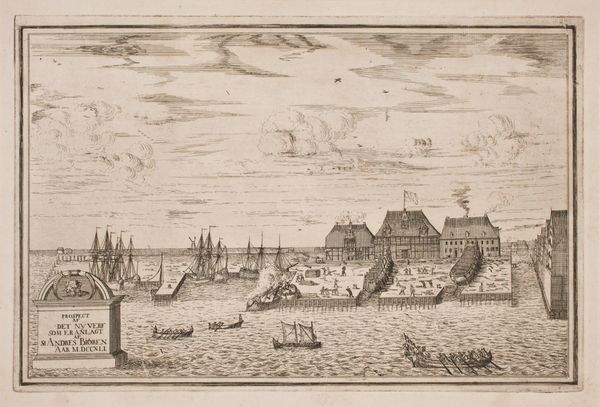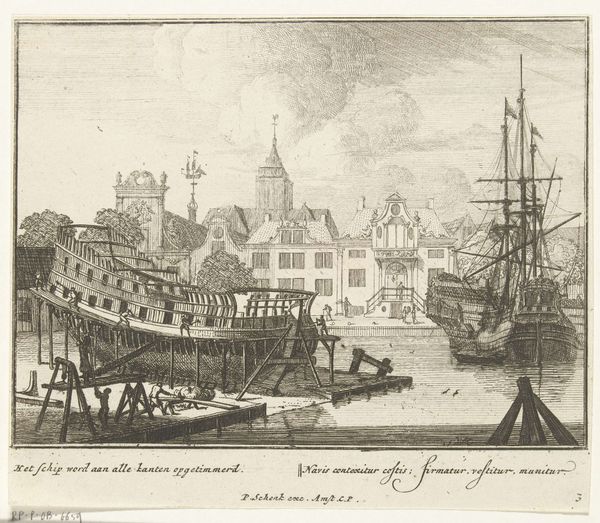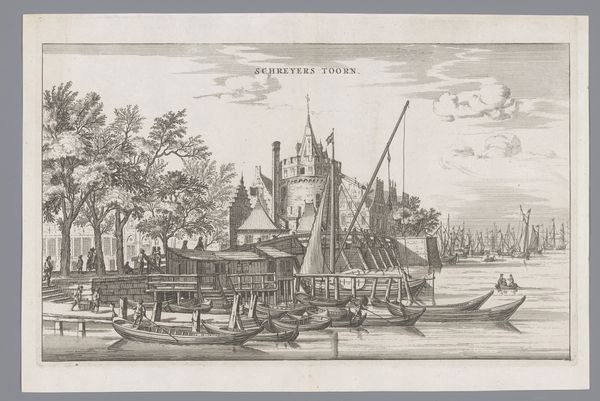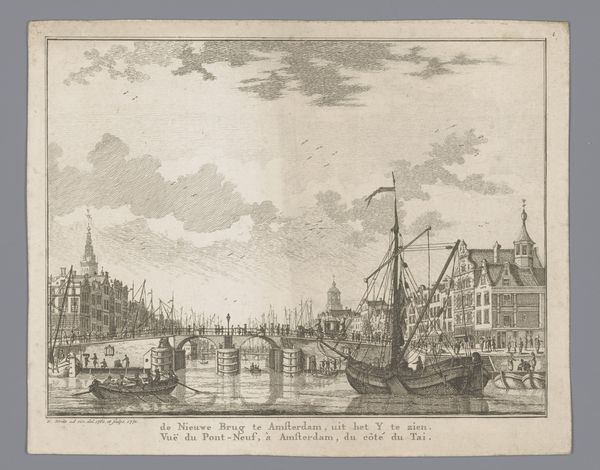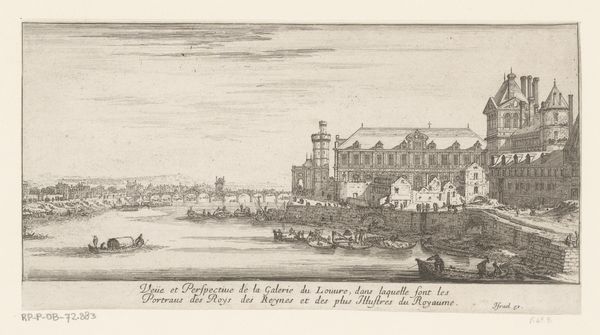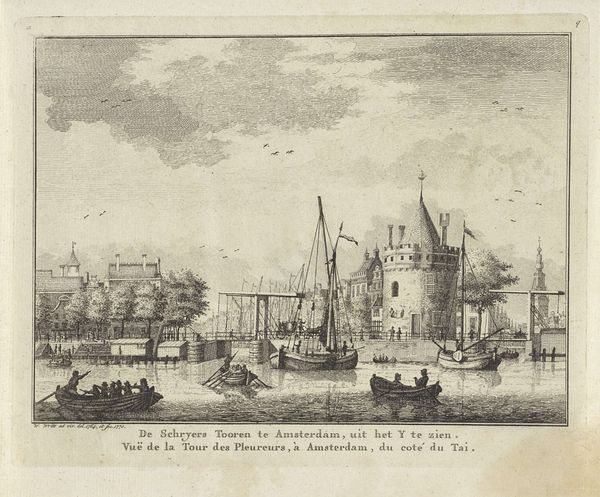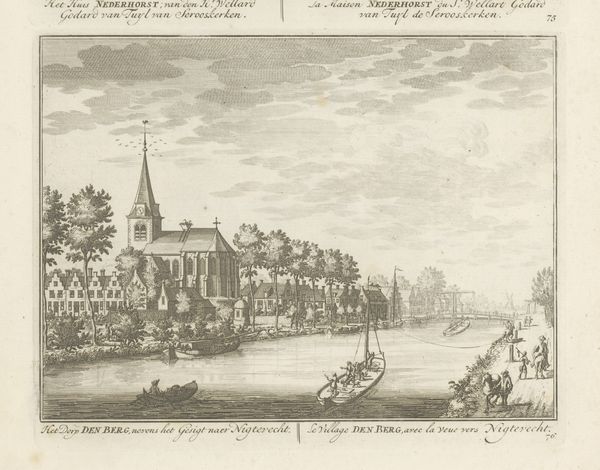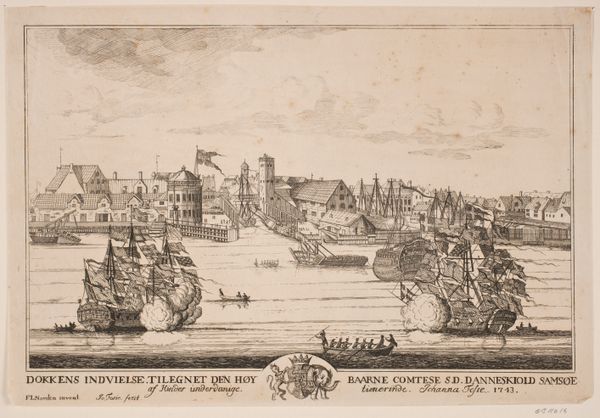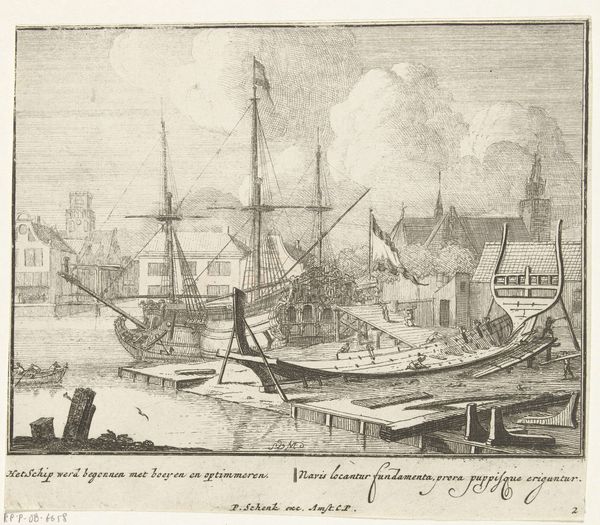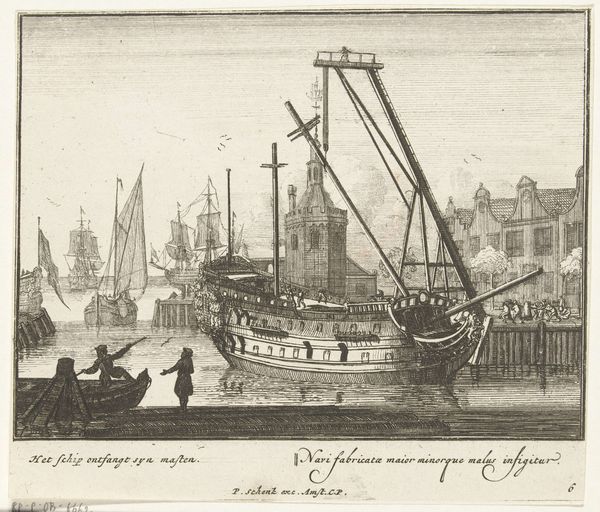
print, engraving
#
quirky sketch
#
dutch-golden-age
#
mechanical pen drawing
# print
#
pen sketch
#
pencil sketch
#
sketch book
#
landscape
#
personal sketchbook
#
sketchwork
#
pen-ink sketch
#
line
#
pen work
#
sketchbook drawing
#
cityscape
#
engraving
Dimensions: height 188 mm, width 250 mm
Copyright: Rijks Museum: Open Domain
Curator: Let's consider Johannes de Vouw’s engraving, "Gezicht op het Admiraliteitshof te Rotterdam" from 1694-1695. Look closely at the lines, the detail etched into this print. It’s incredibly meticulous, isn't it? Editor: It is! It feels almost photographic in its precision, yet the marks of the engraving tool are so present. What do you see in this work, considering its medium? Curator: For me, this piece really speaks to the social and material conditions of its creation. Engravings were reproducible; this image of the Admiralty Court could circulate widely. It becomes a commodity, representing Rotterdam’s naval power and mercantile strength. How might this availability influence its artistic merit? Is mass production intrinsically "less" than singular creations? Editor: That's a fascinating point. It almost democratizes the image, allowing more people access. So, it’s not just about *what* is depicted, but *how* and for *whom*. Curator: Precisely. Consider the labor involved. Engraving demanded skilled artisans. Who were these individuals? Were they recognized for their contribution, or were they merely seen as technicians replicating an idea? This labor informs the artwork’s value, challenging conventional notions of authorship and artistic genius. What kind of artistic exchange and dependency do you think was happening? Editor: I never considered the actual process so deeply. Looking at it now, I appreciate the work more and realize this isn’t just a picture, but the outcome of labor, material choices, and economic forces, as well as a clear statement of civic pride. Curator: Exactly! It's about looking beyond the surface and considering the complex network of production that shaped this image. It shifts the focus from the art object as isolated inspiration and to consider how art participates in the socioeconomic environment.
Comments
No comments
Be the first to comment and join the conversation on the ultimate creative platform.
